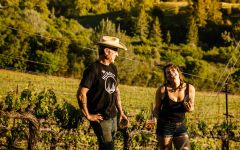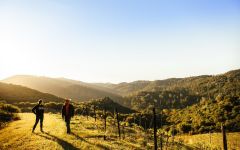Forlorn Hope Sihaya Vare Vineyard Ribolla Gialla 2014



Product Details
Your Rating
Somm Note
Winemaker Notes
Other Vintages
2013-
Wilfred
Wong






These bottles, the first produced by Matthew Rorick Wines, were our headlong rush into the breach. Rare creatures from appellations unknown and varieties uncommon, these wines are our brave advance party, our pride and joy – our Forlorn Hope.
Matthew Rorick found his passion for food and wine at his grandfather's table, where the elder Rorick's love of sharing a bottle, a meal, and good conversation inspired his career in winemaking.
After receiving his degree in Viticulture and Enology from UC Davis, Matthew worked on a diverse number of winemaking projects including collaborations with wineries in New Zealand, South Africa, and Chile, as well as with Peter Michael Winery, Chasseur, and Miura Vineyards in California, among others. The broad array of different winemaking and grape growing techniques and philosophies he encountered provided a unique practical counterpoint to the theory he learned at University and flavor his current direction in the winery.
Taking his cues from the stones and soil, he endeavors to interrupt the natural development of each of his wines as little as possible in order that the character and uniqueness of each vineyard site may take center stage.

There are hundreds of white grape varieties grown throughout the world. Some are indigenous specialties capable of producing excellent single varietal wines. Each has its own distinct viticultural characteristics, as well as aroma and flavor profiles.

One of the world's most highly regarded regions for wine production as well as tourism, the Napa Valley was responsible for bringing worldwide recognition to California winemaking. In the 1960s, a few key wine families settled the area and hedged their bets on the valley's world-class winemaking potential—and they were right.
The Napa wine industry really took off in the 1980s, when producers scooped up vineyard lands and planted vines throughout the county. A number of wineries emerged, and today Napa is home to hundreds of producers ranging from boutique to corporate. Cabernet Sauvignon is definitely the grape of choice here, with many winemakers also focusing on Bordeaux blends. White wines from Napa Valley are usually Chardonnay and Sauvignon Blanc.
Within the Napa Valley lie many smaller sub-AVAs that claim specific wine characteristics based on situation, slope and soil. Farthest south and coolest from the influence of the San Pablo Bay is Carneros, followed by Coombsville to its northeast and then Yountville, Oakville and Rutherford. Above those are the warm St. Helena and the valley's newest and hottest AVA, Calistoga. These areas follow the valley floor and are known generally for creating rich, dense, complex and smooth red wines with good aging potential. The mountain sub appellations, nestled on the slopes overlooking the valley AVAs, include Stags Leap District, Atlas Peak, Chiles Valley (farther east), Howell Mountain, Mt. Veeder, Spring Mountain District and Diamond Mountain District. Napa Valley wines from the mountain regions are often more structured and firm, benefiting from a lot of time in the bottle to evolve and soften.
